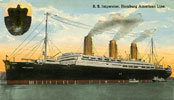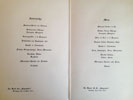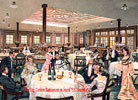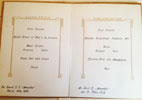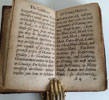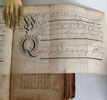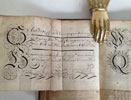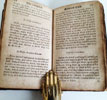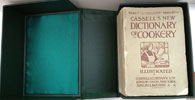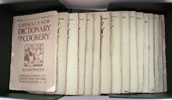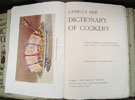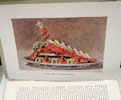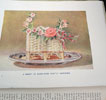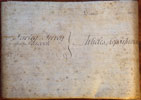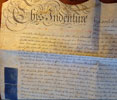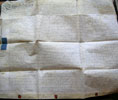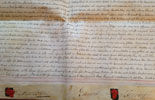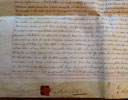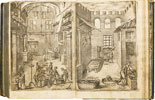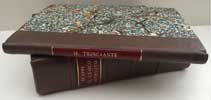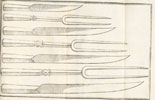The ART of COOKERY MADE PLAIN and EASY
Which far exceeds any Thing of the Kind yet Published. CONTAINING, 1. Of Roasting, Boiling, etc. 11. Of Made-Dishes. 111.Read this Chapter and you will find how Expensive a French Cook's Sauce is. 1V. To make a Number of pretty little Dishes fit for a Supper, or Side-Dish, and little Corner-Dishes for a Great Table; and the rest you have in the Chapter for Lent. V. To dress Fish. V1. Of Soops and Broths. V11. Of Puddings. V111. Of Pies. 1X. For a Fast-Dinner, a Number of good Dishes, which you may make use of for a Table at any other Time. X. Directions for the Sick. X1. For Captains of Ships. X11. Of Hog's Puddings, Sausages, etc. X11. To pot and Make Hams, etc. X1V. Of Pickling. XV. Of making Cakes, etc. XV1. Of Cheesecakes, Creams, Jellies, Whip Syllabubs, etc. XV11. Of Made Wines, Brewing, French Bread, Muffins, etc. XV111. Jarring and Cherries, Preserves, etc. X1X. To make Anchovies, Vermicella, Ketchup, Vinegar, and to keep Artichokes, French Beans, etc. XX. Of Distilling. XX1. How to Market; the Seasons of the Year for Butchers Meat, Poultry, Fish, Herbs, Roots, etc and Fruit. XX11. A certain Cure for the Bite of a Mad Dog. By Dr. Mead. BY A LADY. A engraved printer's device between lines. LONDON: Printed for the AUTHOR, and sold at Mrs Ashburn's, a China-Shop, The Corner of Fleet-Ditch. MDCCXLVII [Price 3s.6 (the 6 written by hand) stictch'd, and 5s. bound]
FIRST EDITION, FIRST ISSUE. 1747. Folio. 287x184 mm. 1 fep. Title page with the the handwritten 6 after the 3s as called for in the last line. [1] 2 pages of Subscribers. 11 pages of Contents with small one inch piece with no loss missing from 1st page.1 page A small Instruction by Glasse. (1)ii To the Reader. (1)4 - 166, although miss-paginated; page numbers 66/67 and 136/137 missing with no loss to text (This miss-pagination matches Cagle's copy). 1 fep. Our copy seems to conform to Marcus Crahan’s description of the first issue, with 16pp. preliminaries rather than 20. Without notice of second place of sale on the title page and with the price of ‘6d’ entered by hand. Pages 37 - 41 with some foxing. All other pages very clean. Title page and edges slightly age browned. Spine and tips bound in sprinkled dark-brown half calf and boards marbled. Spine with raised bands, gilt lines and tooled devices in compartments with red morocco label. A very good copy of one of the rarities of cookery texts.
- ‘The Art of Cookery made Plain and Easy’ was written by Hannah Glasse and published in 1747 in its famous folio format. Even though it was expensive at 5 shillings for a bound copy or 3.6 shillings unbound, it was an instant success, and was a best seller for over a hundred years, being published continuously until 1843. This made Glasse one of the best-known cookery writers of the eighteenth century. She was not supplanted as a culinary authority until the work of Mrs. Isabella Beeton appeared in 1861 over a century later. The books of those famous ladies being two of the cornerstone works needed in the building of an English culinary library. As Hannah Glasse explains in the preface, the book was intended to be an instruction manual for servants - 'the lower sort' as she called them. As Hannah puts it, the book should 'improve the servants and save the ladies a great deal of trouble'. She is dismissive of the fanciful language used by other cookery book writers, which she feels simply confuses the servants: 'the poor girls are at a loss to know what they mean,' she writes. In contrast, her style is precise and direct. The power of her book though is the clarity of the writing. She's authoritative but she is also intimate, treating you as an equal. Even though a large percentage of the recipes were plagarised, even reproduced verbatim from recipes published in earlier books by other writers, she shows a great deal of her own skill and originality. It is an unprecedentedly comprehensive recipe book with simple instructions, accessible ingredients, an accent on thrift (even though she recommends in the preface that half a pound of butter is enough to fry 12 eggs), easy recipes and practical help with weights and timing, which was a big step up from previous works. Her writing style is lively, intelligent and amusing. Glasse is scornful of the elaborate and extravagant French recipes of the period, but many of her recipes will have been influenced by French cuisine, which was becoming increasingly fashionable at the time. This does not inhibit Glasse from including the earliest recipe in an English cookbook for Indian curry, albeit with just black pepper and coriander. No Huldi, Lal Mirch, Methi, Jeera etc. Even though the ‘Art of Cookery’ was a ground breaking effort that generated much interest, the fame and survival of Hannah Glasse’s book is not due to her genius or her ability as a cook, as she was neither, but for four years following its publication, there were widespread rumours that ‘The Art of Cookery’ had been written by a man. For a woman to have written such an eloquent and well-organised work seemed implausible to many. James Boswell's diary records a party at the house of the publisher Charles Dilly, at which the issue was discussed. He quotes Samuel Johnson as saying, 'Women can spin very well; but they cannot make a good book of cookery.' Many others also believed this. It was not till she edited and published her fourth edition of 1751 that Johnson’s ill-advised quip was proved false. Due to the negative press generated by the popular book being first written and published by ‘A Lady’, Glasse inserted her trade card as a handsome engraved frontispiece and signed the first page of recipes, putting to rest all the speculation. (See my 1751 edition – item number 10968 in this website). This first edition is extremely scarce, but just how scarce is hard to figure, even after a lot of research. Due to demand the second edition was published in the same year; 1747. This strongly indicates that the first print run was very small. As can be seen in the Subscriber’s list printed in the first edition, there are 202 names. Assuming the subscribers all received a copy and there was enough cash to print a few more, we can possibly assume a print run of no more than 500 copies. Scarce indeed! --- COPAC lists only 10 firsts of 1747 out of 491 copies of various other editions in British holdings. As could be expected there are substantially more second editions listed. This cookbook has a somewhat iconic status that is hard to believe. Along with Beeton's equally rare original 24 booklets of 'Household Management' published before she brought out the 1st edition in book form, they both fetch silly money when they do appear at auction. --- Bitting, pages 186-87; The STC by Virginia Maclean, page 59; Cagle, pages 497-8; Arnold Oxford, pages 76-77; The Cetus Library, sold at Bloomsbury Auctions, lot 149: Marcus and Elizabeth Crahan collection sold at Sothebys, p317; Andre Simon Bibliotheca Gastronomica , 761;






click on image to enlarge

Antiquarian category
ref number:
11212 
